Three words: Mini. Farmhouse. Table. This cute and functional piece has been in my head for months– it was THE MOST fun to bring vision to life.
Now I can blog from bed. In my jammies. While drinking tea. Amazing! And it was EASY to make, using scrap pallet wood and supplies we had on hand. I knew I wanted it to look just like a farm table with chunky legs and have that distressed, aged look, complete with old nails and knots. The only thing we bought for this project were the 9″ legs, and I found them at Home Depot. Apparently they are used for ottomans. Who knew?!
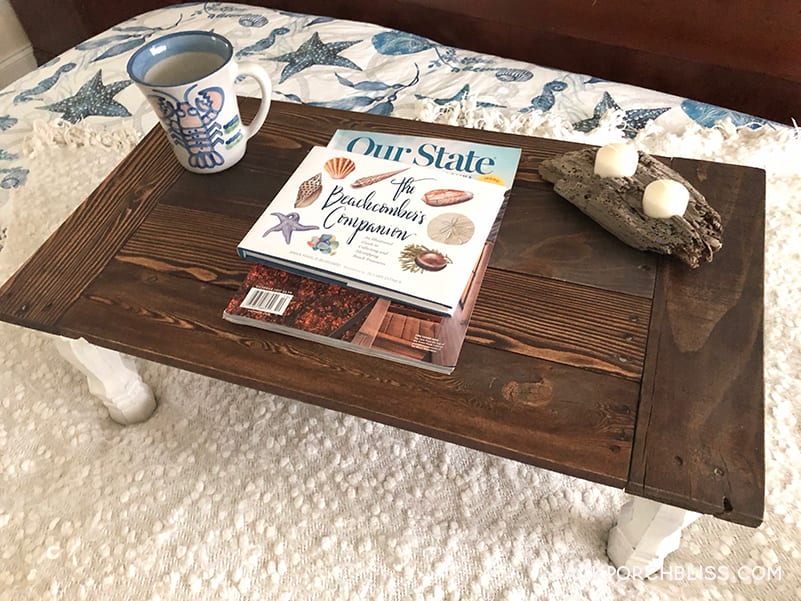
Here’s what you need:
Supplies/Tools
Wood (we used pallet wood)
- Tabletop: 27″ x 15″ (different widths based on what we had)
- Apron: (2) 1 1/4″ x 9 1/4″ (ours was 11/16″) & (2) 1 1/4″ x 21 5/16″
- Braces: (2) 10″ x 3″
(4) 9″ Table legs, we used these from Home Depot
Miter Saw
Table Saw
Hand sander or sandpaper/sanding block
Kreg Jig
1″ Wood screws
1 1/4″Pocket hole screws
Countersink bit
Clamps
Square
Paint and/or Minwax stain
Minwax Pre-stain wood conditioner
Minwax Paste Wax
Safety glasses, gloves
Wood glue
Paint/foam brushes
Old rags
And here’s a pic of Jeff and me before we got started: true love is a building project, matchy-matchy Rae Dunn mugs and safety glasses. #nerdalert

Check out the 9″ legs we used. Aren’t they awesome?? The legs came with screws in the top to attach to a corner plate. Using corner plates would make this project easier, but we wanted the “apron” next to the legs, so we removed the screws and used pocket holes/wood glue to attach the legs to the apron. You’ll want to lightly sand the legs.

We used pallet wood because it’s what we (always) have on hand. Pallet wood is never perfect– which is one of the things we love about it. It comes in various sizes and conditions, and is sometimes warped. The first step was to identify potential pieces/portions of wood that could be used for the project.
We laid out various sizes of pallet wood to get the desired look for the table top. The two end vertical pieces were 3 ½ inches wide and were cut on the miter saw to a length of 15 inches. The 4 horizontal pieces used had various widths that equaled 15 inches. The lengths were cut to 20 inches using the miter saw. It was important to me to have the end pieces (for the farm table look), but you could just as easily use four pieces of wood for the full length.

We took the 4 horizontal pieces and connected them using 2 braces (scrap wood) cut 2 inches wide by 10 inches in length. The width doesn’t really matter, just use what you have and cut it to 10 inches in length.
We attached the braces to the horizontal pieces using 1 inch wood screws that we countersunk. We used a countersink bit to achieve this, but you could easily use a drill bit that is slightly larger than the head of the screw you are using to achieve the same effect. We used two large clamps to keep the pieces in tact before attaching the screws.

The next step was to assemble the apron to the legs of the table. After cutting the apron pieces, we used the Kreg Jig to drill pocket holes.
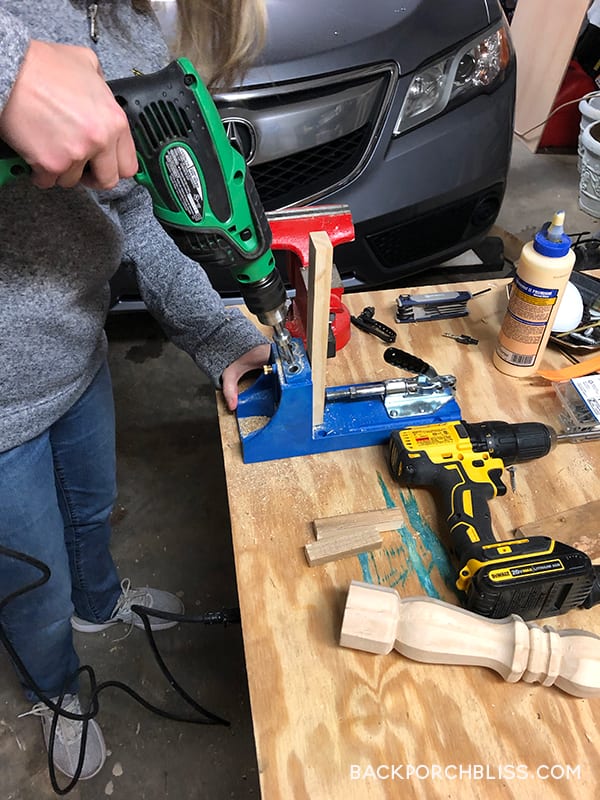
Connect the apron to the legs using wood glue and pocket hole screws. Grab a square and some clamps to help with assembly.



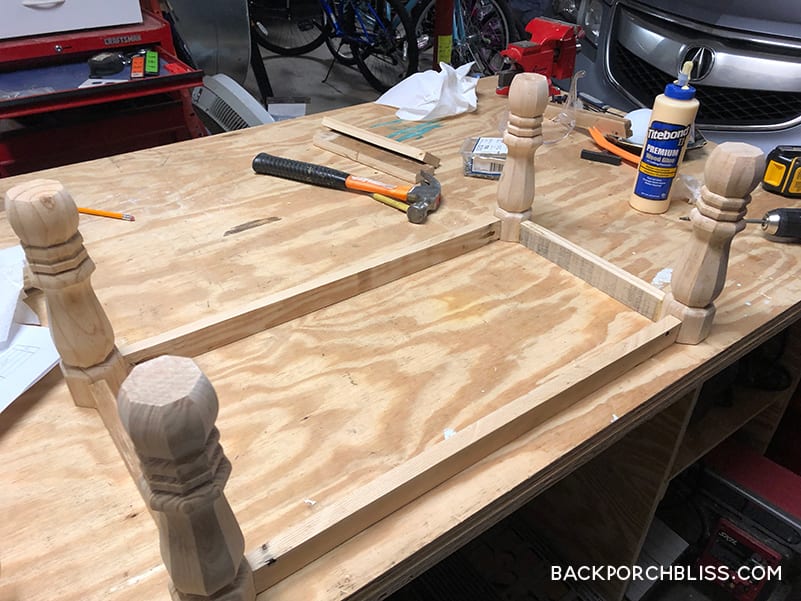
Once the apron is assembled, attach it to the bottom of the farm table. Again, we used the countersink bit and drilled holes along the apron.

Apply a generous amount of glue to the top of the apron. ***** Before you apply the glue, make sure you have outlined in pencil exactly where the apron/legs will be placed on the bottom of the table*****

Using 1 inch screws, secure the apron to the bottom of the farm table.


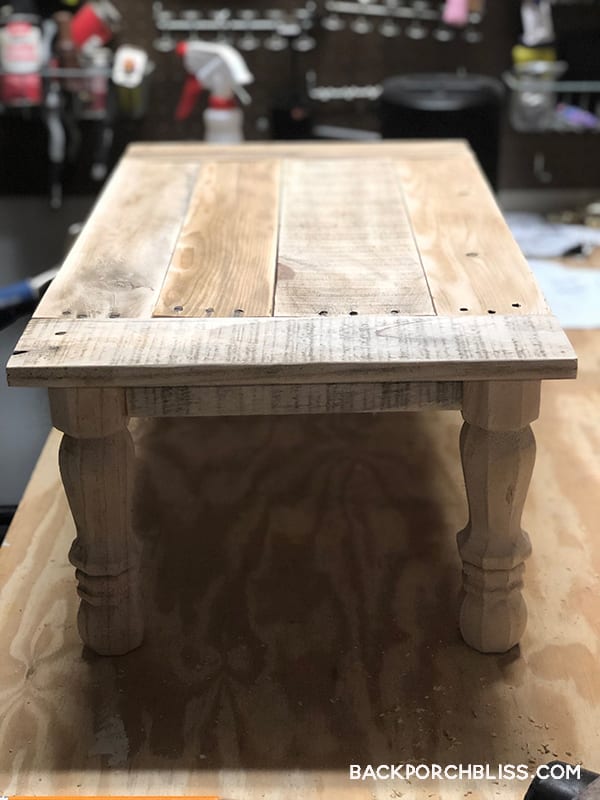
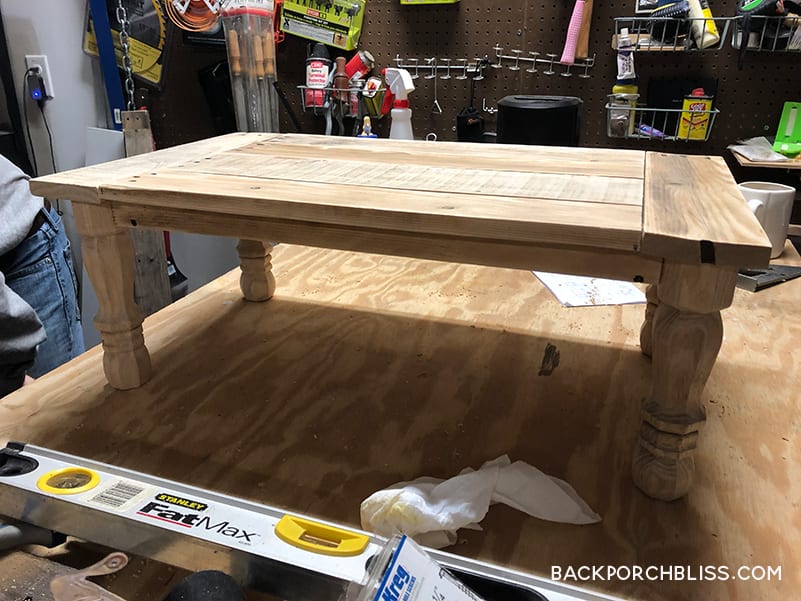
Time to make it pretty! We debated on the finish for the table– you could paint and distress the whole table in farmhouse white (or whatever color you like). If you choose this look, you can skip the pre-stain wood conditioner. If you choose to stain the table, or a portion of the table, using a pre-stain wood conditioner will help keep your stain even and your color consistent. So, for our version, we brushed the top with a pre-stain wood conditioner then taped the apron to avoid stain overrun.

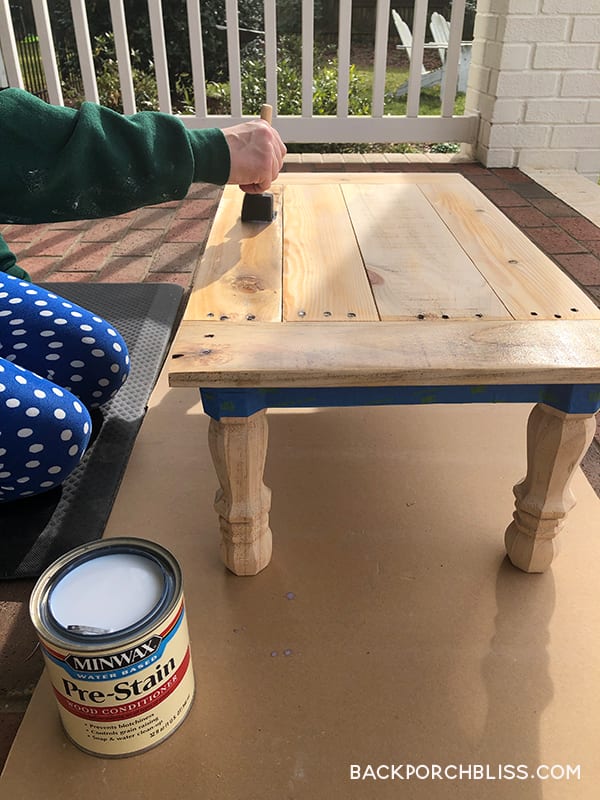
Brush the stain onto the top, brushing in the direction of the grain. We stained the top and bottom of the table top. Let the stain sit until you have the desired look you want, then use an old rag and wipe it off.



We brushed on a little stain where we knew we’d later distress– think edges and corners.

We painted the apron and legs in a farmhouse white, the same color we used for my Office Hutch. Looking back at this picture, we should have waited for the bottom stain to dry a little bit more before applying the paint and could have taped the stain to control the paint overflow. But we are impatient. And when I say we, I mean Jeff. HA!

Once the piece was dry, we used sandpaper to distress the corners and edges, where natural distress would happen. There’s no right or wrong way here, just sand until you get the look you want. I love how the old nails and notches in the wood show with the stain.


Once you’ve distressed to your heart’s content, wipe down the piece with a damp old t-shirt or rag.

The final step is to apply a layer of paste wax, and wipe it off.

That’s it! This would make a beautiful piece for a guest room with a small basket of guest essentials + magazines. Or, use it in your room as a lap desk or breakfast tray. Enjoy!
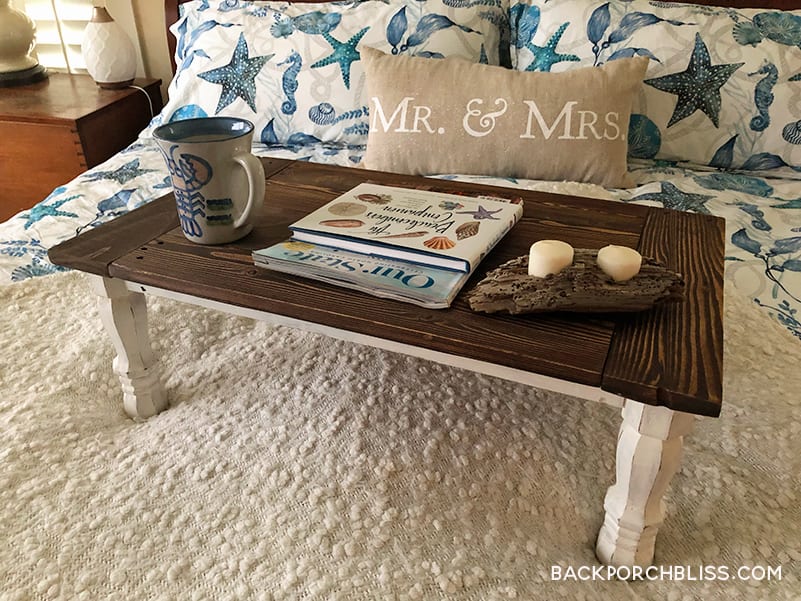


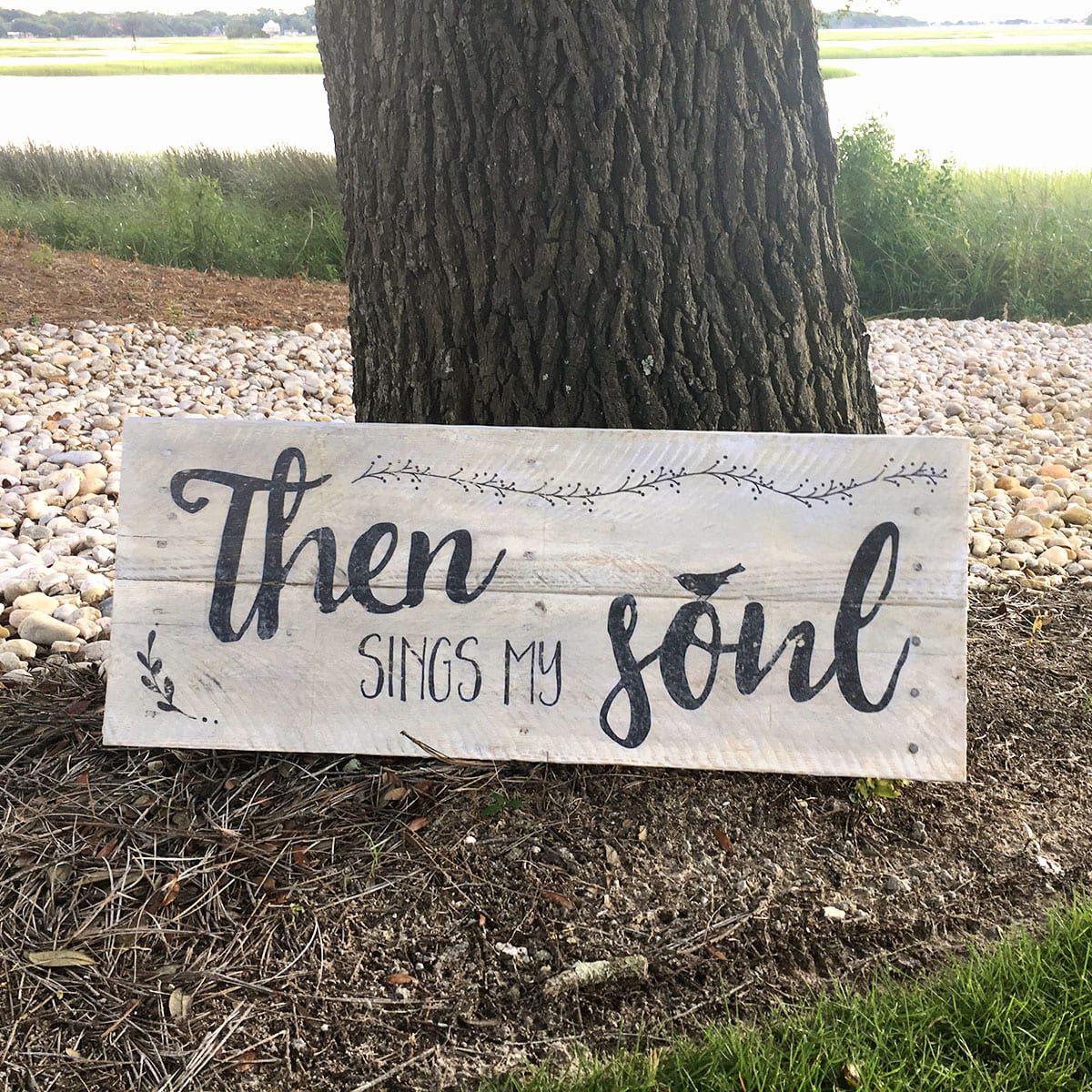


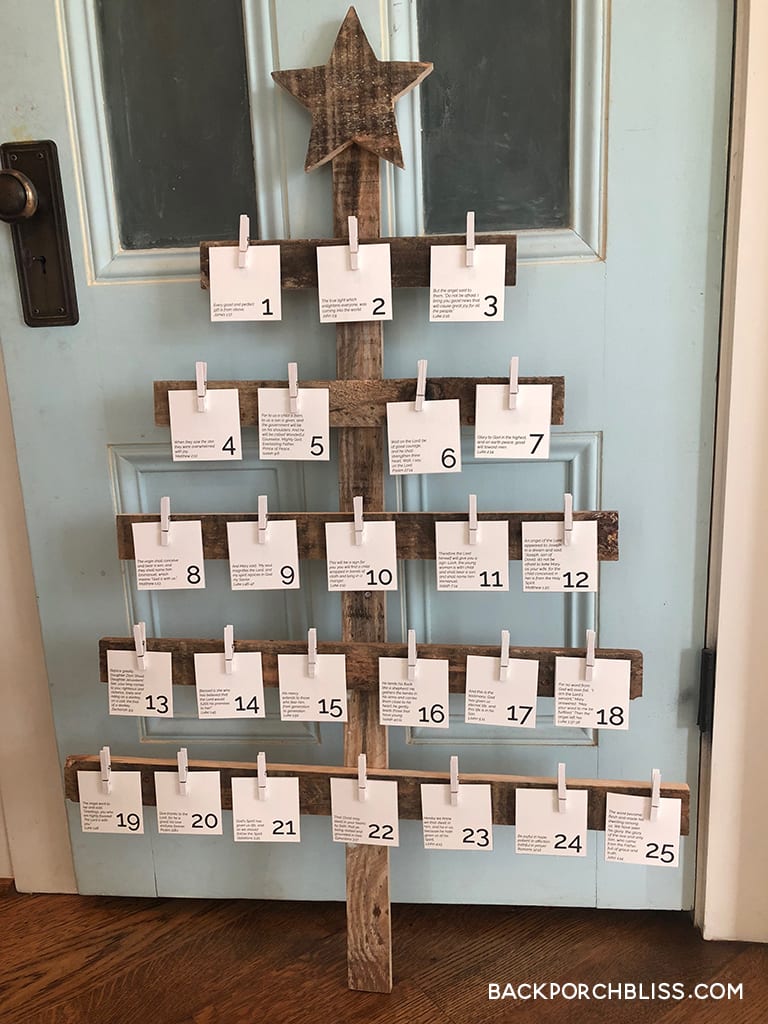





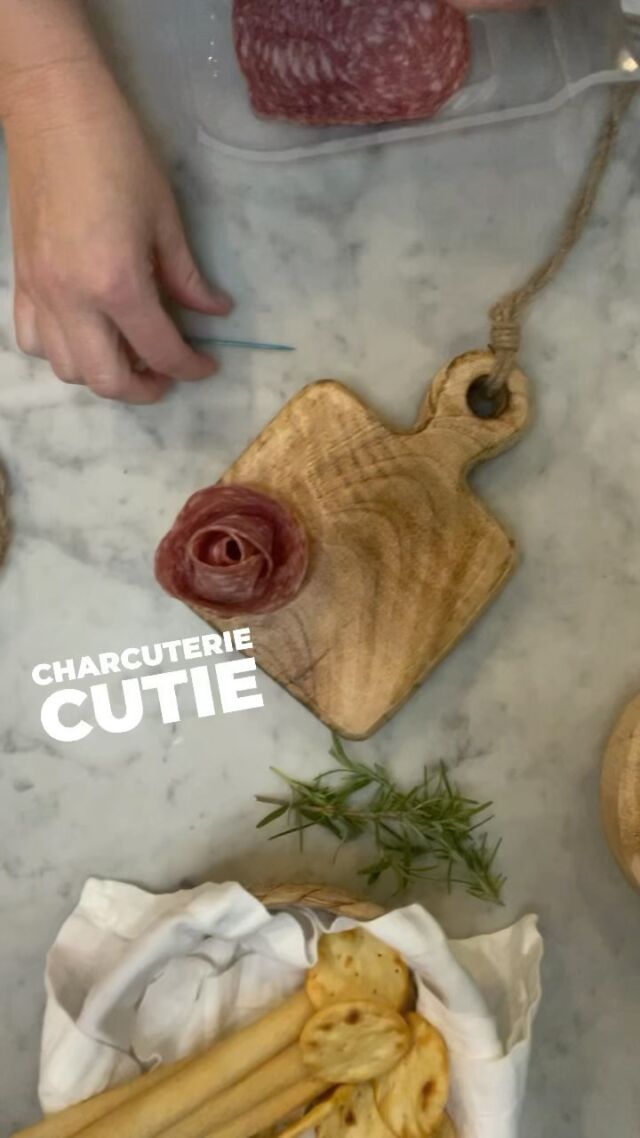
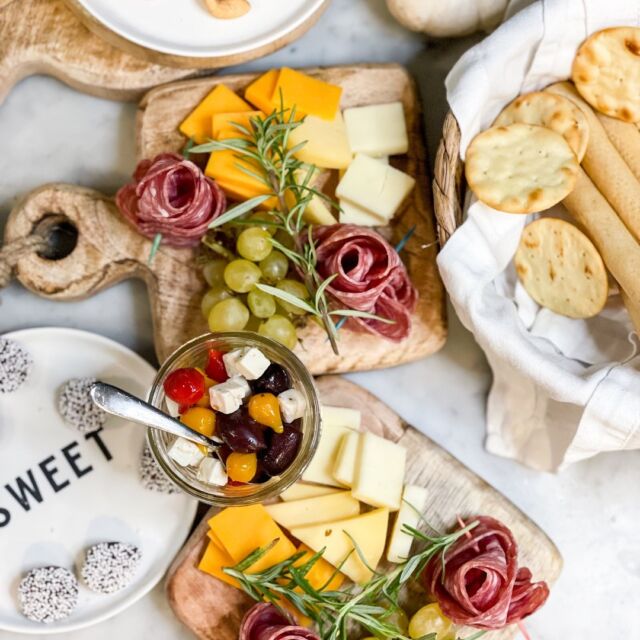
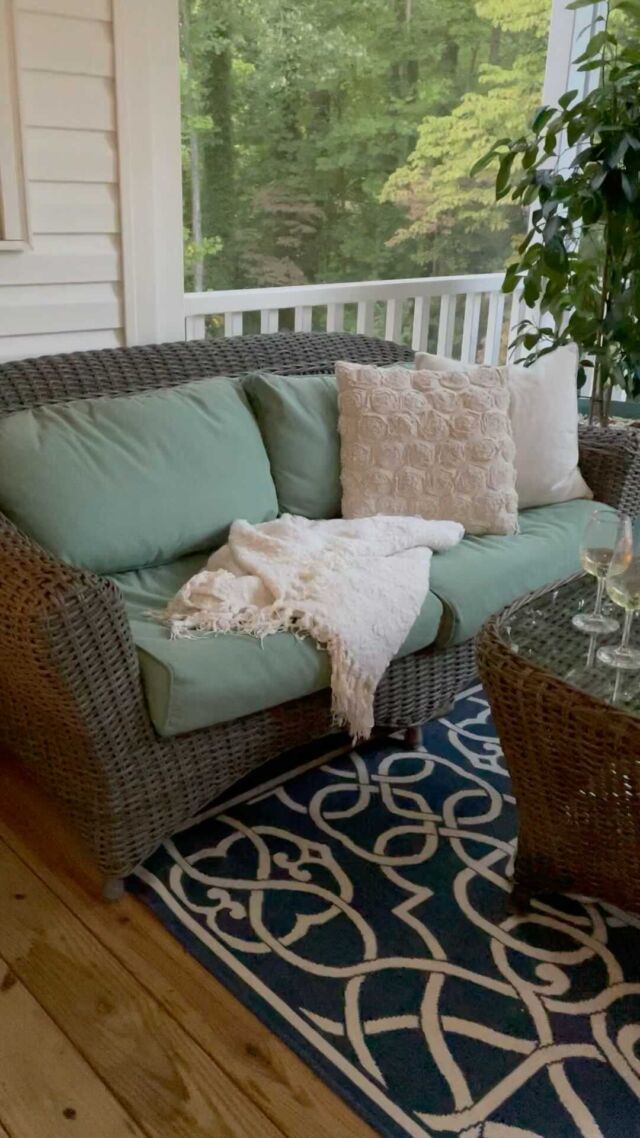

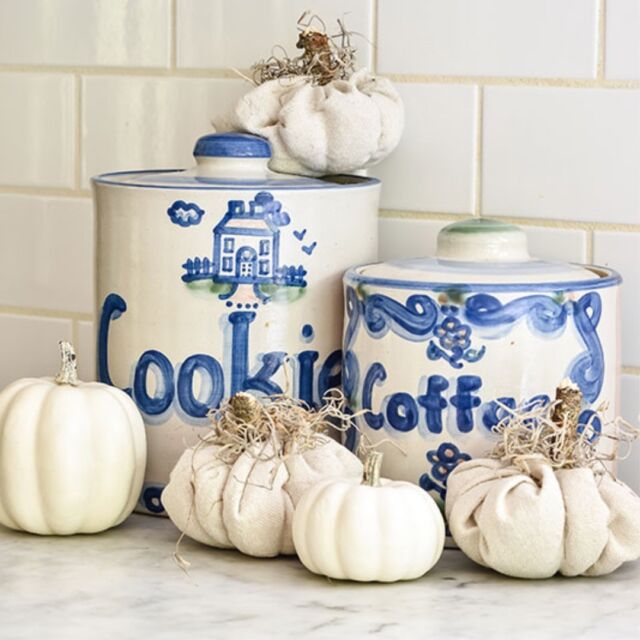
We made the table! I love it. I’m using it now.
We painted the legs and apron green.
I don’t think I can attach a photo or I would show you.
Oh my goodness, Nancy! I would love to see it. Feel free to email it to me at misty@backporchbliss.com, or tag me on FB or Instagram @backporchbliss. XOXO